
On Campbell's Island is a war memorial side-by-side with an artwork dedicated to peace. One rises imposingly; the other is unassumingly low to the ground. Together, they give us a greater perspective on the area's history than if we were to consider them separately.
 Campbell's Island is just north of East Moline, accessible from Illinois Route 84. The island is named for U.S. Lieutenant John Campbell, who was leading three gunboats past it on July 19, 1814, when his boat was grounded during a storm. While vulnerable, they were attacked by an estimated 500 Sauk warriors allied with the British Army. The attack led by Black Hawk and the ensuing fight became known as the Battle of Rock Island Rapids - one of the most western battles of the War of 1812. In all, there were between 35 and 37 casualities (depending on the source) among Campbell's men and their families - including the deaths of 14 men, a woman, and a child.
Campbell's Island is just north of East Moline, accessible from Illinois Route 84. The island is named for U.S. Lieutenant John Campbell, who was leading three gunboats past it on July 19, 1814, when his boat was grounded during a storm. While vulnerable, they were attacked by an estimated 500 Sauk warriors allied with the British Army. The attack led by Black Hawk and the ensuing fight became known as the Battle of Rock Island Rapids - one of the most western battles of the War of 1812. In all, there were between 35 and 37 casualities (depending on the source) among Campbell's men and their families - including the deaths of 14 men, a woman, and a child.
In 1908, the Campbell's Island State Memorial was dedicated on the site where the lieutenant's boat lay derelict for years. The monument is maintained by the Illinois Historic Preservation Agency as a state historic site.

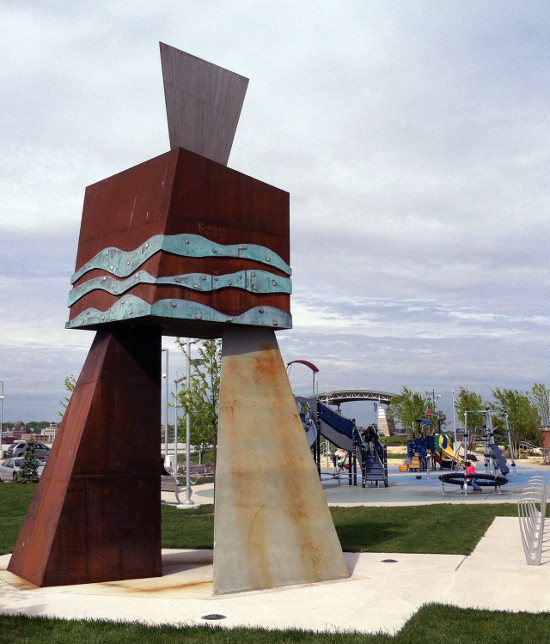

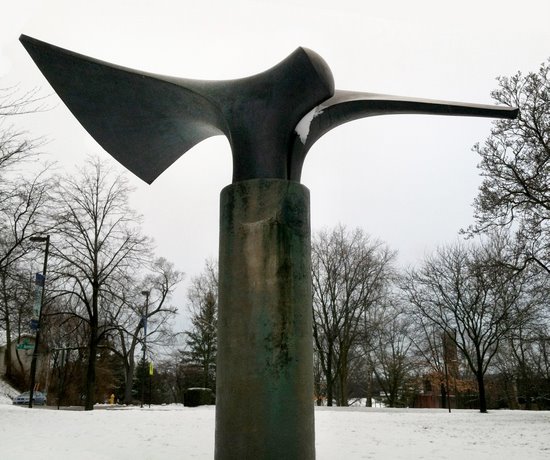
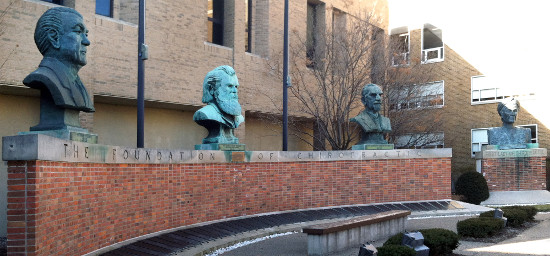

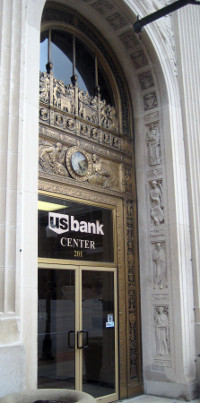 The entrance to the First National Bank Building (now U.S. Bank) at 201 West Second Street in Davenport tells the story of commerce and banking through classical images and symbols. The ancient Greek and Roman references and high artistic level of the entrance tell us, in effect, that banking is an important institution - one of the cornerstones of Western civilization and a pillar of the community.
The entrance to the First National Bank Building (now U.S. Bank) at 201 West Second Street in Davenport tells the story of commerce and banking through classical images and symbols. The ancient Greek and Roman references and high artistic level of the entrance tell us, in effect, that banking is an important institution - one of the cornerstones of Western civilization and a pillar of the community.
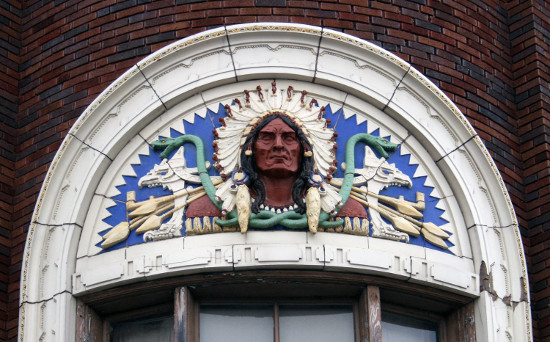

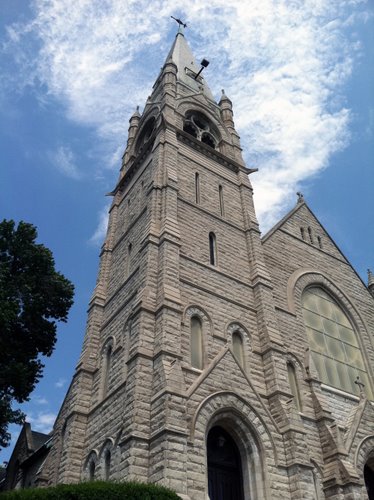 When Sacred Heart Cathedral (at the corner of Iowa and 10th streets in Davenport) was completed in 1891, its bell tower and spire was the tallest structure in the Quad Cities. Soaring majestically above the surrounding trees and neighborhood, its approximate height of 160 feet seemed even greater because of its placement at the top of a steep hill near the crest of the bluff overlooking the Mississippi.
When Sacred Heart Cathedral (at the corner of Iowa and 10th streets in Davenport) was completed in 1891, its bell tower and spire was the tallest structure in the Quad Cities. Soaring majestically above the surrounding trees and neighborhood, its approximate height of 160 feet seemed even greater because of its placement at the top of a steep hill near the crest of the bluff overlooking the Mississippi.







